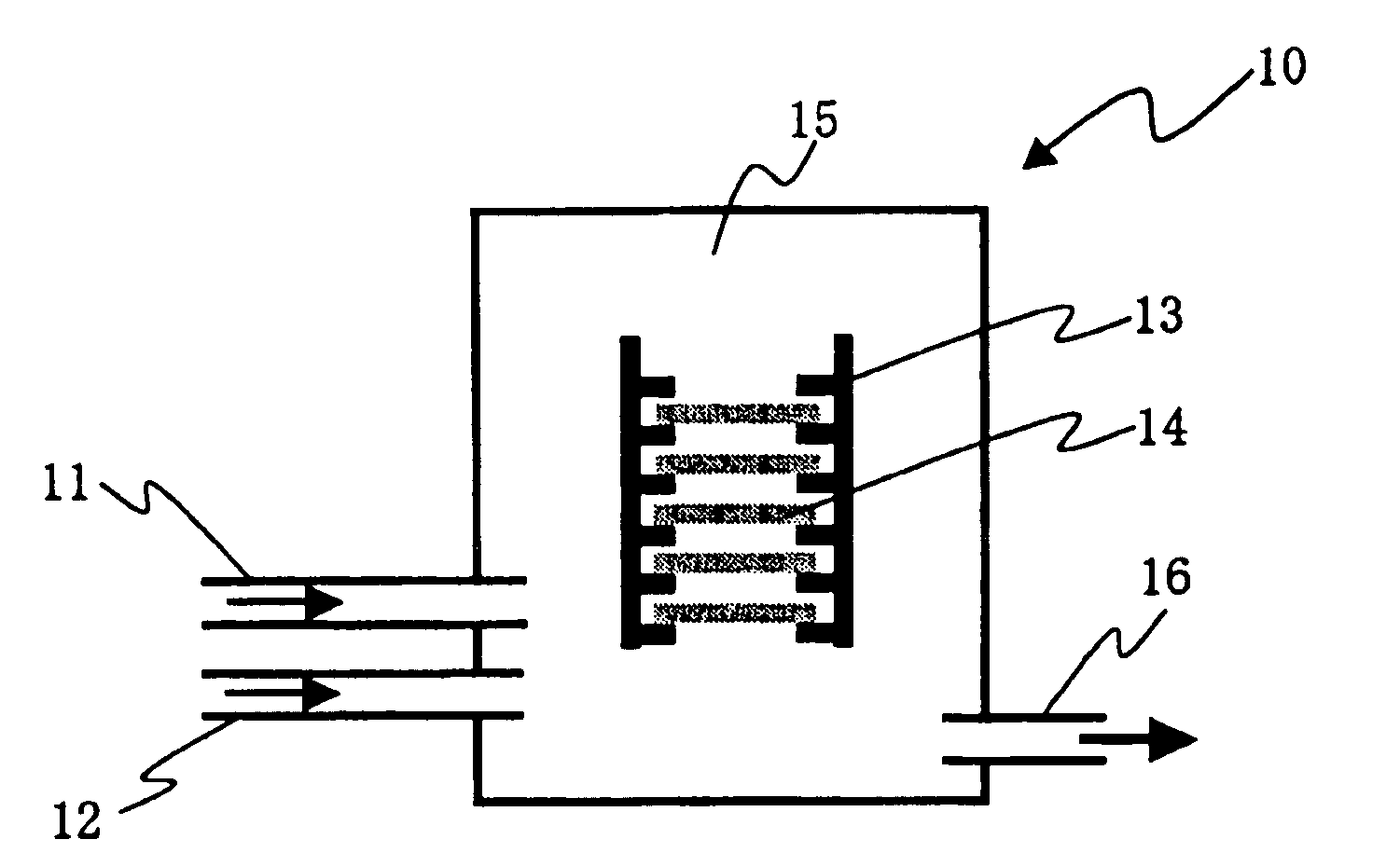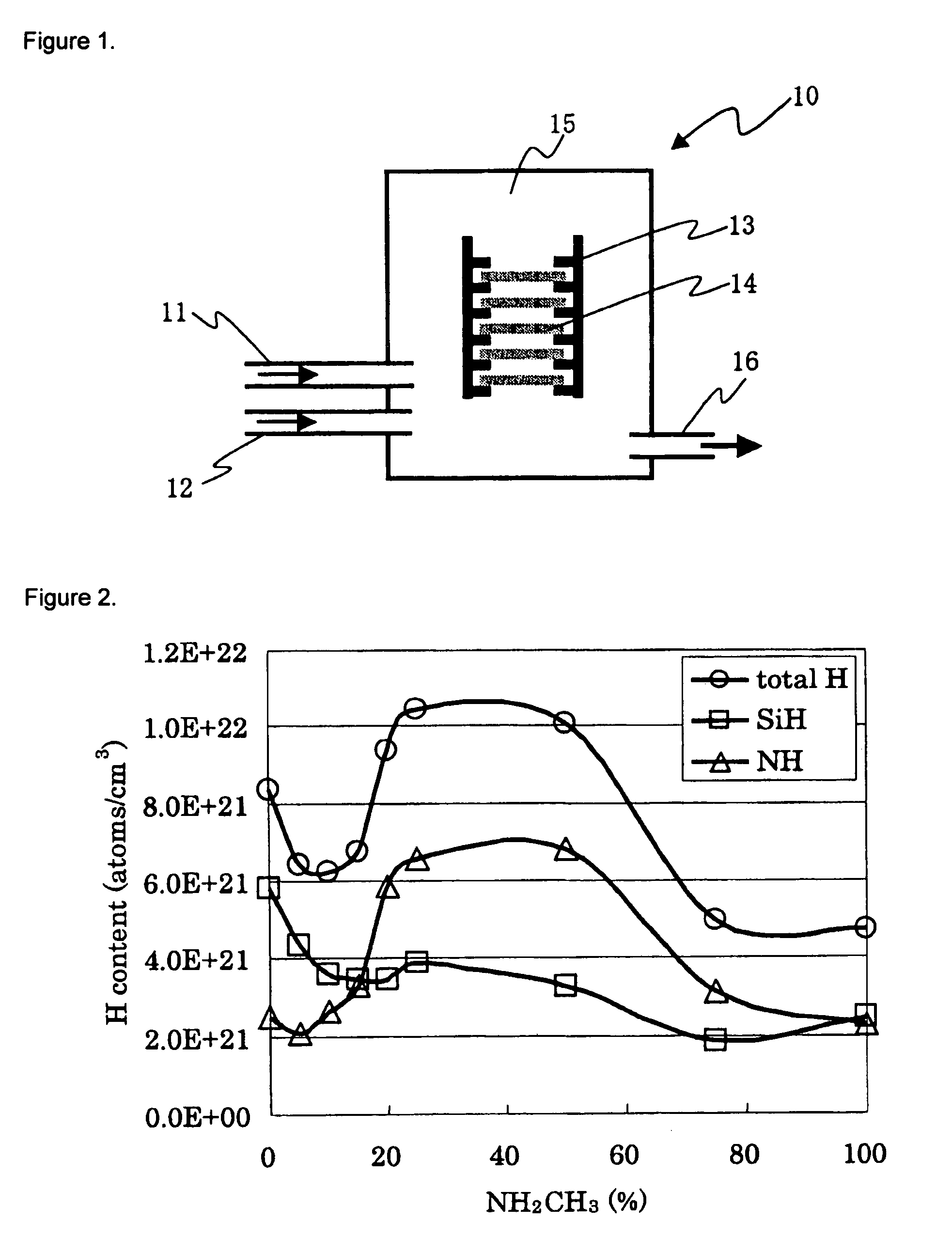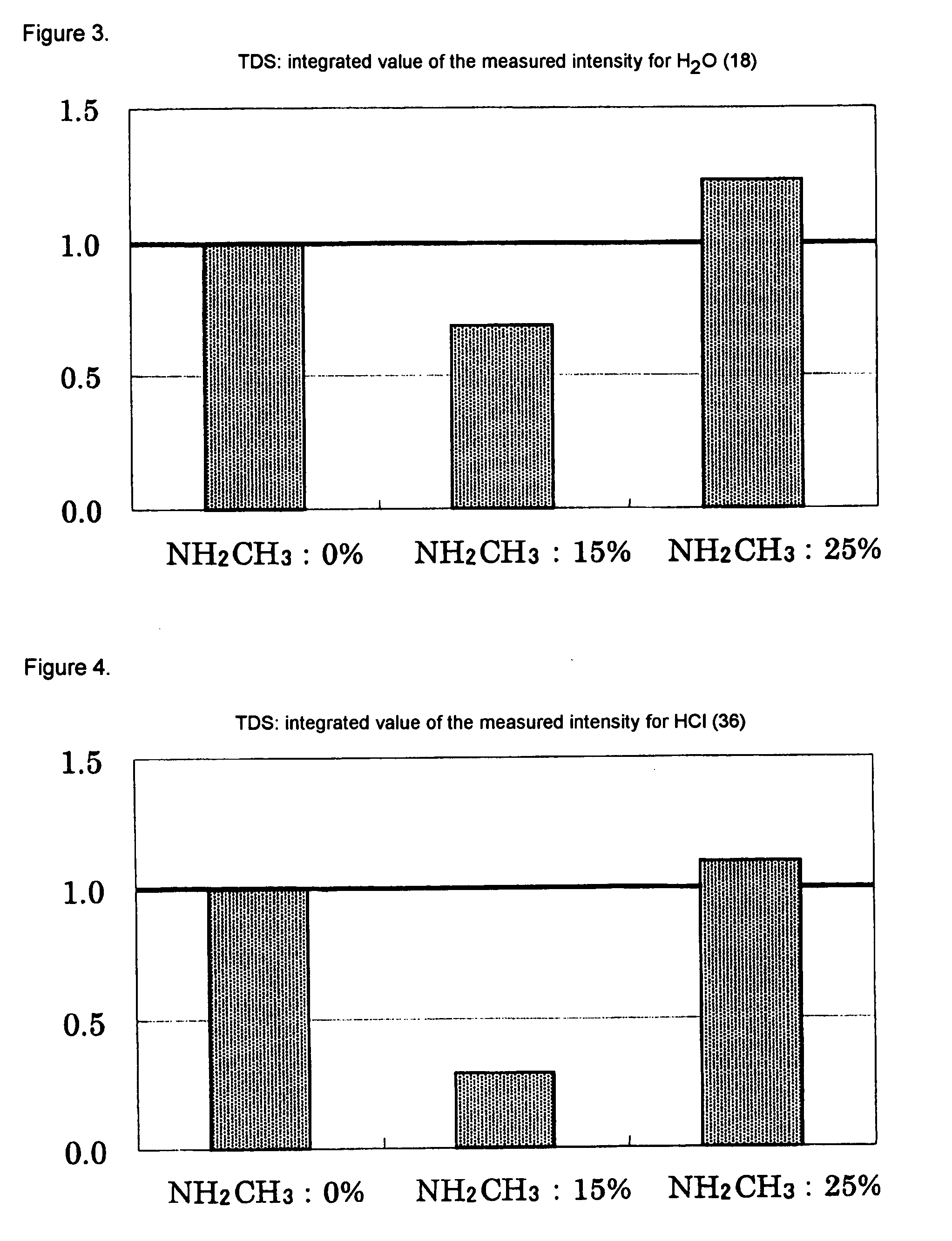Method for producing silicon nitride films and process for fabricating semiconductor devices using said method
a technology of silicon nitride and film, which is applied in the direction of coating, metallic material coating process, chemical vapor deposition coating, etc., can solve the problems of increasing impurities, deteriorating film properties, and increasing thermal budget, so as to improve electrical reliability, reduce thermal budget, and improve film properties
- Summary
- Abstract
- Description
- Claims
- Application Information
AI Technical Summary
Benefits of technology
Problems solved by technology
Method used
Image
Examples
example 1
[0038]FIG. 1 illustrates an LPCVD tool for executing the method according to the present invention for forming silicon nitride films. Silicon source (SiH2Cl2, SiCl4, Si2Cl6, etc.) gas is fed into this LPCVD tool 10 from the injector 11; a mixed gas of monomethylamine (CH3NH2) and ammonia (NH3) as nitrogen source is fed from the injector 12; and a silicon nitride film is formed on the silicon wafer 14 that is mounted in the boat 13 in the reaction compartment 15. Reference symbol 16 refers to an exhaust port.
[0039] The addition of the monomethylamine makes it possible to terminate the silicon dangling bonds with the methyl group and thereby enables an improvement in the film quality and leakage characteristics, etc., even at low temperatures (450-600° C.). While low temperatures (450-600° C.) are identified for the film-formation temperature, the film-formation temperature is not limited to these temperatures. That is silicon nitride film with good film properties and good leakage c...
example 2
[0056] FIGS. 8(a) through (d) contain process cross sections that illustrate an example of the application of the inventive silicon nitride film to a MOSFET (dielectric gate transistor).
[0057] As shown in FIG. 8(a), an element isolation region 72 comprising a dielectric (e.g., SiO2) is formed on a silicon substrate 71 and a MOSFET 70 is formed in the region defined by the element-forming regions. This MOSFET 70 is constituted of source and drain extension regions 73a, 73b (denoted below as SD extensions) that have been ion-implanted with boron (B), a source region 74a and drain region 74b corresponding to these SD extensions, and a gate electrode 77 separated by an intervening gate dielectric film 76.
[0058] A channel region 75 is formed between the SD extensions in this MOSFET 70, while a sidewall film 78 is formed on the sidewall surfaces of the gate dielectric film 76 and gate electrode 77. This sidewall film 78 comprises Si3N4 film and is formed using the LPCVD tool shown in FI...
PUM
| Property | Measurement | Unit |
|---|---|---|
| Temperature | aaaaa | aaaaa |
| Temperature | aaaaa | aaaaa |
Abstract
Description
Claims
Application Information
 Login to View More
Login to View More - R&D
- Intellectual Property
- Life Sciences
- Materials
- Tech Scout
- Unparalleled Data Quality
- Higher Quality Content
- 60% Fewer Hallucinations
Browse by: Latest US Patents, China's latest patents, Technical Efficacy Thesaurus, Application Domain, Technology Topic, Popular Technical Reports.
© 2025 PatSnap. All rights reserved.Legal|Privacy policy|Modern Slavery Act Transparency Statement|Sitemap|About US| Contact US: help@patsnap.com



